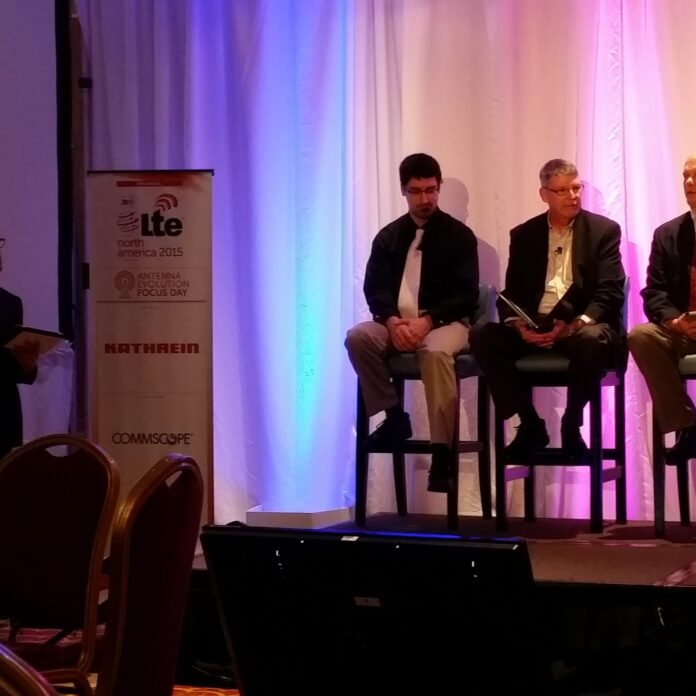DALLAS – Antennas took center stage on the first day of the LTE North America conference, with discussions centered around the evolving environment for these frequently overlooked contributors to the functionality of wireless networks.
Ken Rehbehn, principal analyst for the mobile radio access network at 451 Research, led the antenna session and described a number of challenges being dealt with in the ecosystem: The proliferation of spectrum bands that need to be supported at a cell site; restrictions on acquiring new sites means that most towers are shared, and antennas can be impacted by the operations of adjacent systems; increasing sectorization to support more capacity; and the broadening of the antenna toolkit with more integrated elements and options for electrical and remote tilt.
Tony DeMarco, chief product officer and GM for Matsing’s base station antenna unit, introduced the crowd to a spherical antenna the company has developed, which is said to offer improved performance for roughly equivalent weight and about one-fourth the wind load of traditional panel antennas. Matsing’s Luneberg lens antenna has been used by Telecom Italia in a 3G trial, and also by AT&T for its “super cow” setup that was used at the South by Southwest festival held earlier this year in Austin, Texas.
Although the Luneberg lens antenna represents an exploration into unconventional antenna types, a much more prosaic evolution is also happening on the antenna side: a change in common connectors. The industry is shifting from a seven-sixteenths to the 4.3-10 connector, which is smaller and has been passive intermodulation performance, due in part to the demand for increased numbers of antenna ports as more bands are supported.
The choices operators need to make in network investments to increase capacity are not always clear-cut. Mike Wolfe, director of technical sales at CommScope, shared the results of simulations the company has done comparing increased sectorization to the use of four-way multiple-input/multiple-output in an urban environment, and concluded that for most KPIs, sectorization provided more advantages – but, he cautioned, CommScope used only 2D clutter in its initial simulations and believes that scenarios with 3D clutter may show more parity between the two options.
In a panel dissecting indoor coverage issues, Rehbehn said that although most network traffic is now generated indoors, return on investment for in-building projects is uncertain and the logistics are complicated. Ray Hild, VP of sales in North America for antenna vendor Galtronics, described an ideal in which one network could be installed to support many uses: public safety, consumer and enterprise cellular coverage, and “Internet of Things” applications – but fellow panelist Edward Stewart, who is part of Canadian operator Sasktel’s RF support and optimization unit, said that he has yet to see an installation with that goal actually work in the real world.
“The reality is that the RF requirements for each of those services are so different,” Stewart said. While different systems might be able to leverage the same backhaul to bring costs down, he said, “I have never seen it work yet from a pure RF standpoint.”
Looking ahead at antenna challenges coming down the road, Jim Nevelle, president and CEO of antenna company Kathrein, said the upcoming 600 MHz spectrum auction will mean a need for new antennas to support the band, and new concerns about PIM interference, as well as keeping up with massive MIMO developments as part of “5G.”
Follow #LTENA coverage on Twitter: @khillrcr

